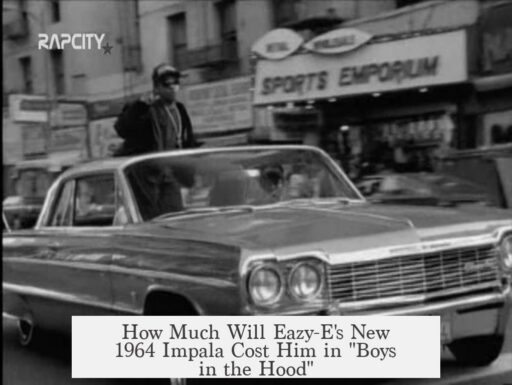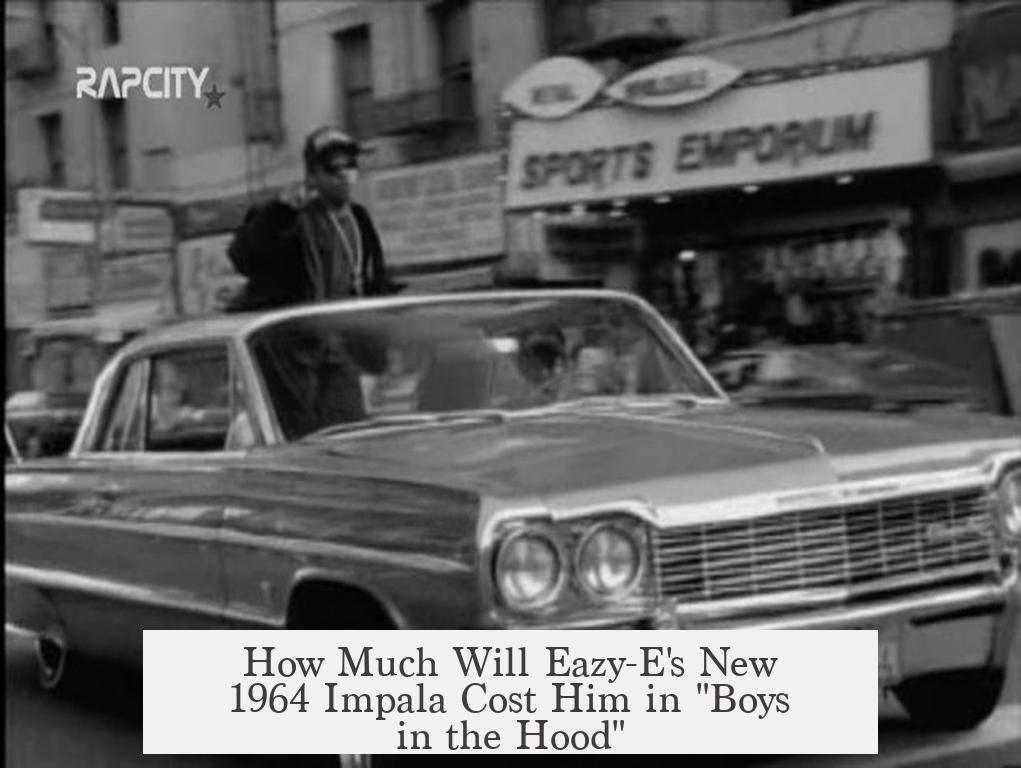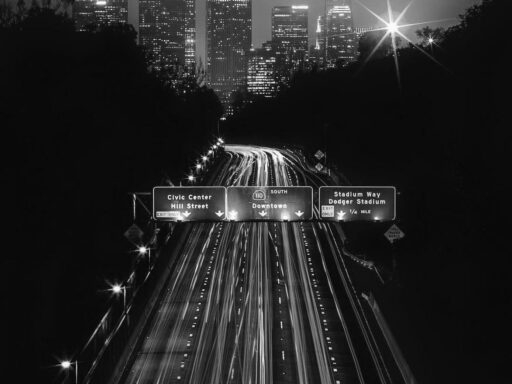In 1987, Eazy-E’s new 1964 Impala would likely cost between several thousand dollars and about $10,000, depending on the car’s condition and style. Adding lowrider customizations typical of that era could push the price higher by a few thousand dollars.
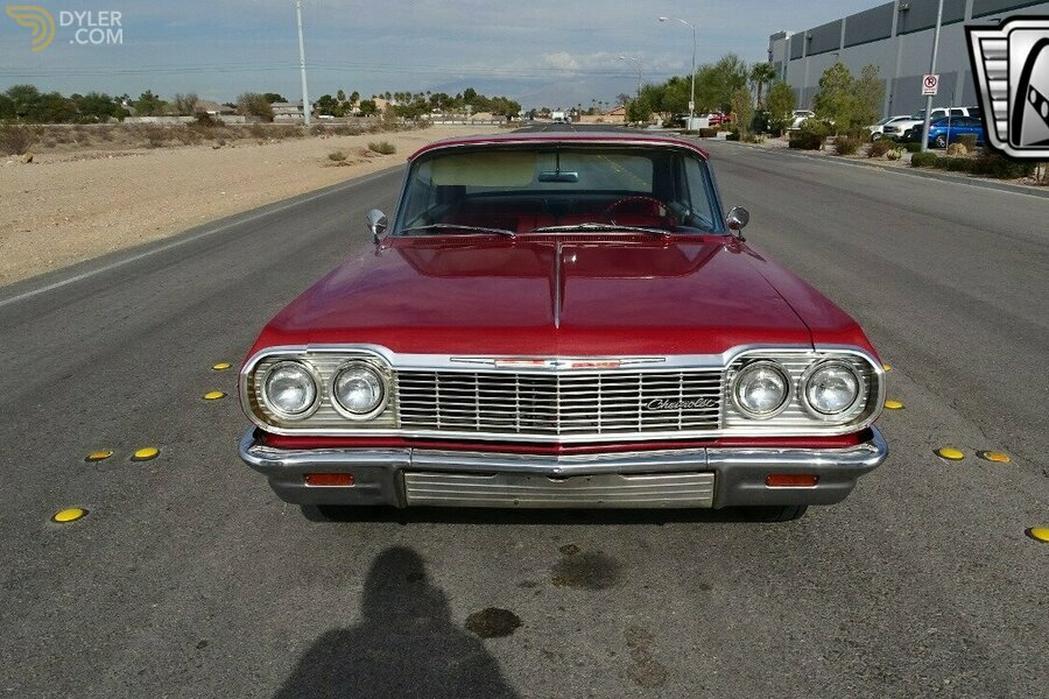
At that time, the ’64 Impala was 23 years old, similar to how a 1998 car is regarded today. Although highly prized in today’s classic car market, it was quite common then. Chevrolet produced nearly 900,000 Impalas in 1964. Over 500,000 of these were the popular coupe body style. Among those, 30,000 were the Super Sport (SS) models, sought after for their performance and styling. Convertibles totaled around 50,000. These versions were especially favored in lowrider culture, which Eazy-E was part of.
In the late 1980s, a standard 1964 Impala in good shape would cost a few thousand dollars. Better-condition, higher-end models approached $10,000. Customized lowriders required extra investment for paint, hydraulic systems, wheels, and interior work. These upgrades could add several thousand dollars to the price. Choice between buying a finished lowrider or building one yourself usually favored purchasing a ready car due to costs and depreciation of parts after installation.
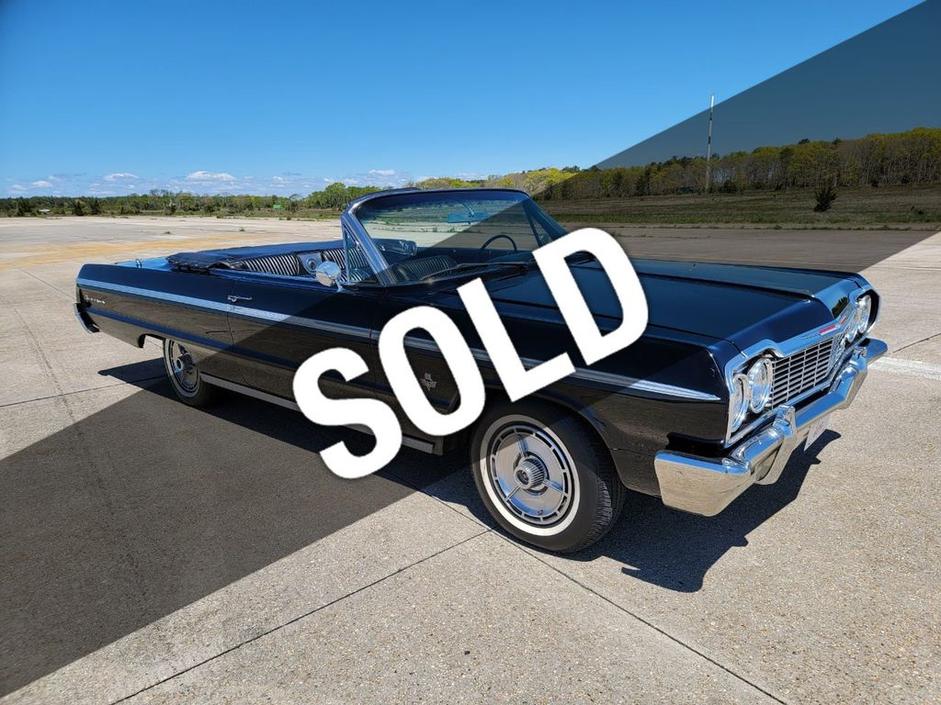
| Car Type | Estimated 1987 Cost (USD) |
|---|---|
| Standard 1964 Impala (non-SS) | $2,000 – $5,000 |
| Good Condition SS or Higher-End Model | Up to $10,000 |
| Lowrider Custom Modifications | $2,000 – $5,000+ |
Therefore, Eazy-E’s comment about buying another Impala after wrecking one indicates a reasonable cost for replacement, especially considering his likely preference for a customized lowrider model. This price stands in stark contrast to today’s valuations where pristine 1964 SS Impalas can fetch $40,000 to over $100,000.
- The 1964 Impala was common and affordable in 1987.
- Basic models cost a few thousand dollars; SS and good-condition cars were closer to $10,000.
- Lowrider customization added several thousand dollars to the price.
- Buying a finished custom car was often cheaper than rebuilding one.
- Today, these cars are significantly more valuable as collector vehicles.
How Much is Eazy-E’s New 1964 Impala in “Boys in the Hood” Going to Cost Him?
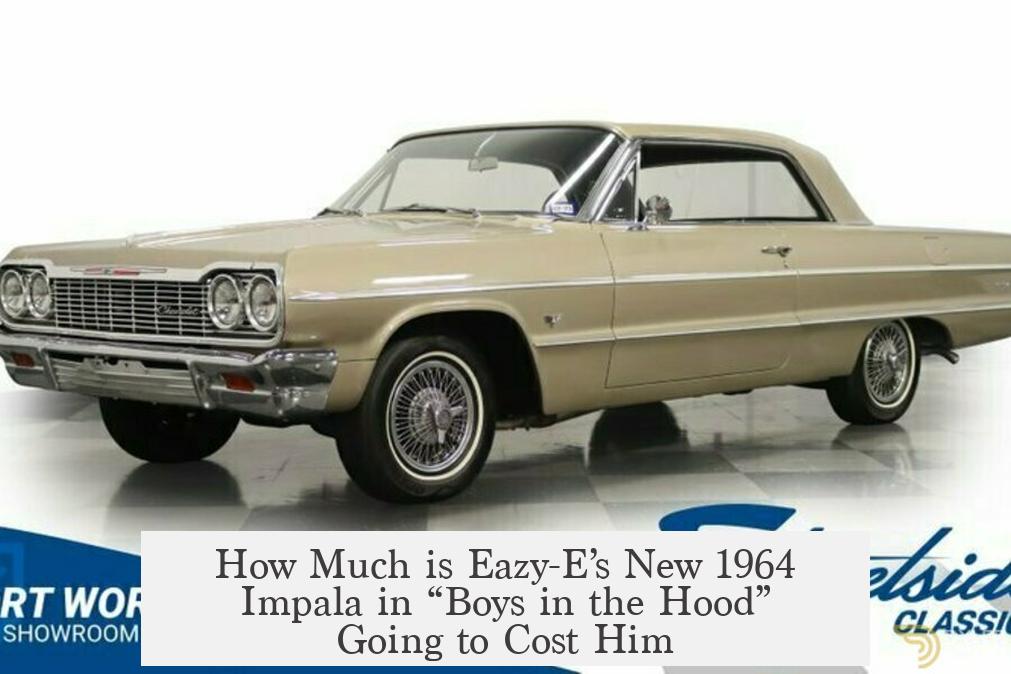
In Eazy-E’s 1987 classic “Boys in the Hood,” when he wrecks his ’64 Impala, he casually says, “Oh brother, I throw it in the gutter and go buy another.” But just how much would that “another” set him back back then? The quick answer: depending on the model and customization, anywhere between a few thousand dollars to about $15,000 tops in 1987.
Let’s break it down—because the story of Eazy-E’s Impala is more than just lyrics; it’s a snapshot of car culture, economics, and style from a specific moment in time.
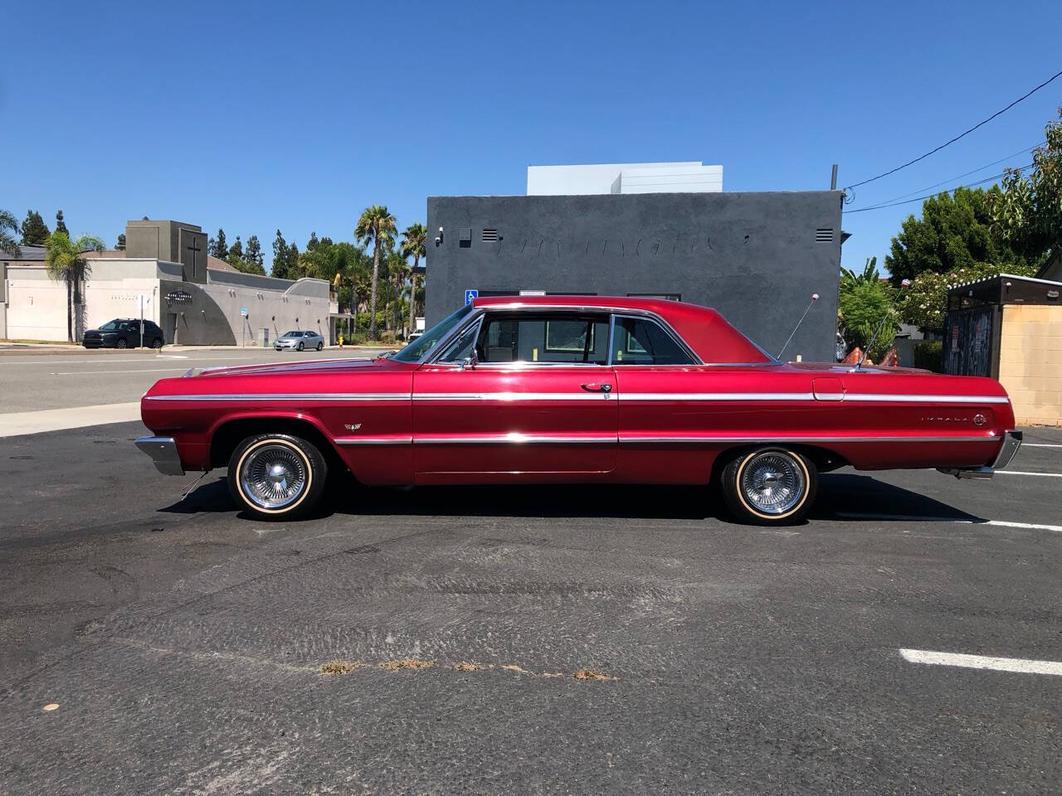
The ’64 Impala: Then vs Now
In 1987, the ’64 Chevrolet Impala is 23 years old. To put that in perspective, that’s like a 1998 car today. Not an ancient relic, but certainly a classic by then.
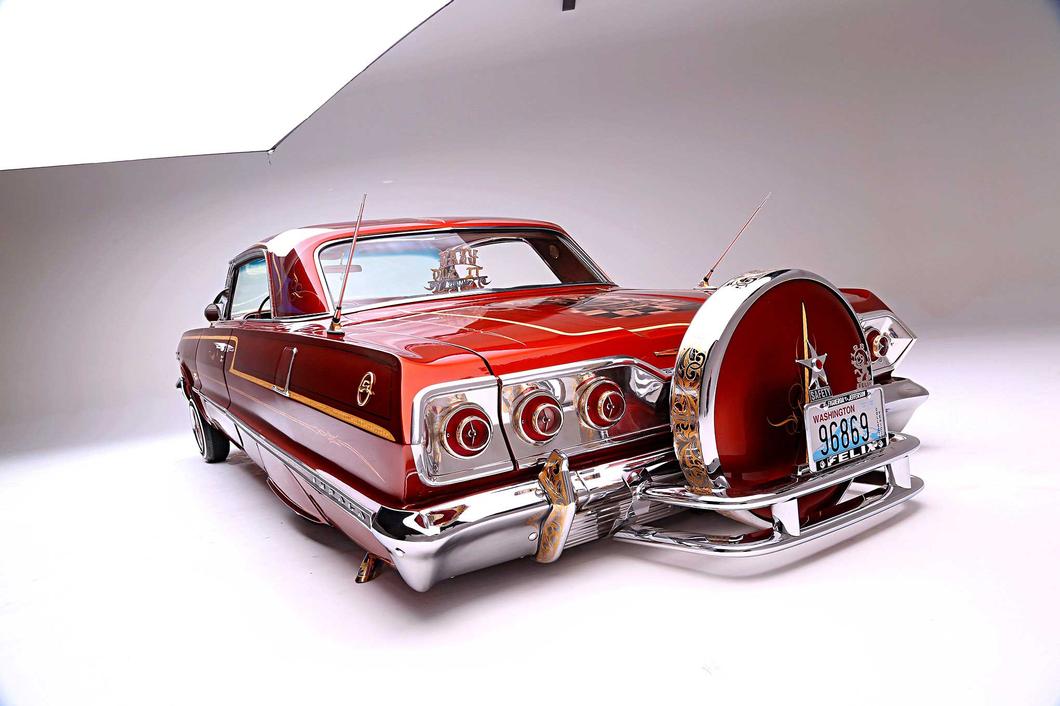
While today these cars can command sky-high prices, the late 1980s were a very different game. At that time, a decent, non-SS (Super Sport) ’64 Impala might sell for just a few thousand dollars. If you wanted something swankier and in better shape, maybe a top-notch model, you could land one for close to $10,000.
The numbers make sense. Back in 1964, Chevy pumped out nearly 900,000 Impalas. Over half of these were coupes—which were the sweet spot for collectors and lowrider fans alike. The most desirable models, the SS and convertibles, accounted for smaller portions but still tens of thousands each.
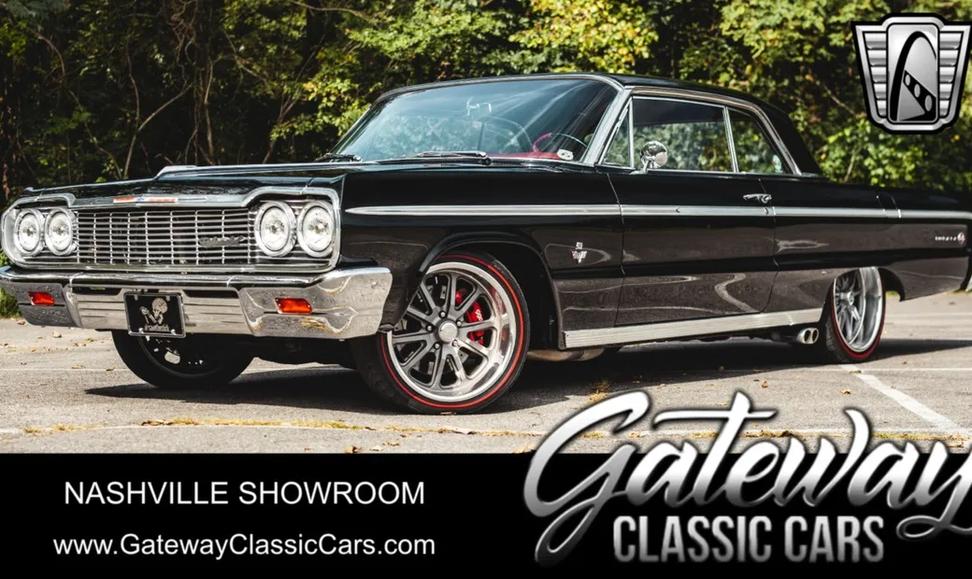
Bottom line? Scarcity wasn’t an issue then. They were pretty common and affordable, much like your reliable neighborhood sedan.
Lowrider Luxury: Customizing the Impala

Eazy-E’s Impala isn’t just any beat-up classic. He’s part of lowrider culture where customization is king. Those neat paint jobs, hydraulics, shiny wheels, and other custom parts aren’t cheap.
In fact, those mods add a few thousand dollars—or more—to the car’s cost. For Eazy-E, budgeting for a fresh ’64 Impala means considering both the base price and the price of pimping it out to his style.
Interestingly, building or modifying one’s own lowrider usually costs more than buying a finished masterpiece. Once those parts are installed, their resell value drops. So many folks just pay extra to skip labor headaches and snag a ready-to-roll custom ride.
Imagining the Price Tag: What’s Eazy-E Really Paying?
- Presentable non-SS ’64 Impala: few thousand dollars (around $3,000 to $5,000)
- Good condition, higher-end model: roughly $10,000
- Customization for lowrider style (paint, hydraulics, wheels): additional few thousand ($3,000+)
So mathematically, Eazy-E’s new Impala in 1987 would set him back something between $6,000 and $15,000, give or take.
Compared to today’s collector prices—where clean SS models fetch $40,000 to $60,000 and pristine versions can top six figures—that’s quite a bargain.
Why Does This Matter Beyond the Lyrics?
Understanding the cost of Eazy-E’s new ride helps unpack a slice of LA’s car culture during the golden era of hip hop. The ’64 Impala wasn’t just transportation; it was a statement. It symbolized style, status, and street identity.
It also exposes an economic reality. This wasn’t some rare museum piece. It was affordable enough to be replaced without breaking the bank—a common car elevated by creativity and community.
Plus, this sheds light on a key aspect of hip hop history: the relationship with cars isn’t just about horsepower or speed. It’s about customization, culture, and self-expression.
Practical Lessons from Eazy-E’s Impala Purchase Today
For car buyers and collectors in 2024, there are some practical takeaways: if you want a classic ’64 Impala with lowrider flair, be ready to pay much more than Eazy-E did.
If you stumble upon a presentable non-SS model today, expect to pay tens of thousands, just for the base car. Add custom paint jobs, hydraulics, and bodywork, and your wallet will take a deeper hit.
Also, rebuilding a ’64 Impala or modifying it bit by bit can drain your budget faster than buying a finished custom ride. Eazy-E’s throw-it-in-the-gutter-and-buy-another attitude may seem frivolous, but it highlights a simple money-saving strategy—sometimes it’s just easier to buy ready-made than build yourself.
Final Thoughts: More Than Just a Car
Next time you listen to “Boys in the Hood,” imagine Eazy-E not just as a rapper but a savvy car owner who understands value, style, and culture.
His new ’64 Impala isn’t just a replacement—it’s an investment in identity. For a few thousand bucks, he picks up a fresh canvas for his lowrider artistry, one that lets him keep cruising through the streets and telling his story.
So, no, his new Impala isn’t going to cost a fortune in 1987. But it definitely costs enough to turn some heads and make a statement.
Are you a fan of classic cars or lowrider culture yourself? What’s your favorite ride that tells a story? Drop your thoughts and let’s keep this conversation cruising.
